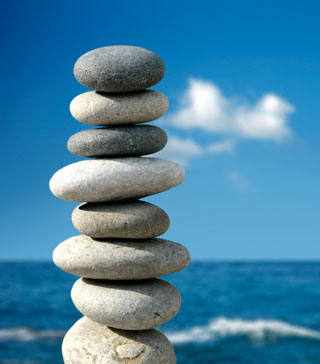Alexander Technique: Mindfulness in Action
By Robin John Simmons
When someone comes for a lesson in the Alexander Technique, our first question is always, ‘What are you doing during the day?’ Regardless of whether the person is a banker or works in IT, our interest as teachers is in how the person uses themselves to do what they do. If they spend majority of the day sitting at a computer, they are, in effect, a professional sitter!
Obviously, this category does not cover everyone, nor does it cover all the actions that the sitters complete during the day; other actions may well include bending, lifting, carrying, walking, running, stair climbing, and so on. In the Alexander Technique, we look at how each individual uses themselves. So if a musician comes for a lesson, it is important for them to play their instrument so that we can examine what they are doing with themselves while playing. How do they stand or sit? What are their arms doing? How long do they need to keep these actions going?

The Alexander Technique is a way of refreshing the underlying ways in which each person carries out movements. The Technique is applicable to any activity in life—it helps to eliminate unhelpful or ‘wrong’ ways of acting and brings out the best possible performance of the action. To do all actions with improved skill allows even the simplest everyday tasks to become more interesting and meaningful. It is also useful to explore how a person engages in activities they love; for instance, sports, yoga, or dance. If the person enjoys these activities, they will probably be motivated to improve their quality and skill in these areas. In fact, top performers in various fields appreciate the Alexander Technique. In particular, musicians hear the improved quality in the sound of their instrument, and horse riders notice that their mounts respond more sensitively and accurately.
What Happens in a Lesson?
When we establish why the pupil wants to learn the Technique—to get rid of pain occurring anywhere in the body, improve performance, prevent psychophysical troubles, manage stress better, or all of the above—we explore the activity that the person spends the most time doing every day. Alexander used the actions of standing, sitting, and moving from standing to sitting or from sitting to standing in his lessons. We use these actions even today, but we also engage with the movement patterns that are of particular interest to each person. For example, how to play the violin with less tension; sit at the computer with less neck or shoulder pain; manage household tasks with minimal stress; prevent back trouble or headaches; and so on.
Initially, our main task is to get the pupil (we prefer this term to patients) to become a bit more self-aware. Very few of us are aware of our whole self as one integrated system in action. Just the action of standing involves many aspects of psychophysical coordination. So by first pausing and not moving much, we can begin to appreciate our psychophysical unity and our balanced relationship to the surface we are on. During this process, the breathing calms down, and we can begin to entertain conscious thinking to affect our whole being. In this way, we can notice more clearly how we do what we do. Then, we can begin to take control of our responses and reactions. We become more self-observant and develop the skill of consciously directing ourselves. All this tends to help alter unwanted habit patterns that we may not have been aware of previously. We can then observe how we initiate actions, and perhaps learn to redirect ourselves to prevent over-contracting, holding the breath, tightening the jaw, or other constricting actions that we previously carried out without quite knowing.
As lessons progress, we offer pupils ways of realigning and balancing their whole system. By practising such special activities at home, the whole system tends to unlock, and breathing and coordination become freer. Using the Technique, we are able to reliably recover from slumps, tension, and stressful situations. In essence, we gain greater command over our actions.
The Goal
Mindfulness in action is a characteristic goal of the Alexander Technique. The processes can be applied to change unhelpful actions that are unconsciously performed. In learning the Technique, you gain self-awareness and energy, and find that everyday actions can be performed with skill. The process is endlessly fascinating and the Technique can be applied to any activity.
Twelve Reasons to take Alexander Technique Lessons
- Overcome muscle tensions and stiffness
- Overcome back, neck, or joint pain
- Improve posture
- Improve breathing and vocal problems
- Give more assured presentations
- Perform tasks with more skill
- Support pregnancy and childbirth
- Overcome anxiety and stress
- Prevent accidents and injuries
- Improve self-awareness
- Move easily, with fluidity and good coordination
- Learn practical procedures you can apply to make immediate life improvements
Life is movement; life is breath. But what if
* * *